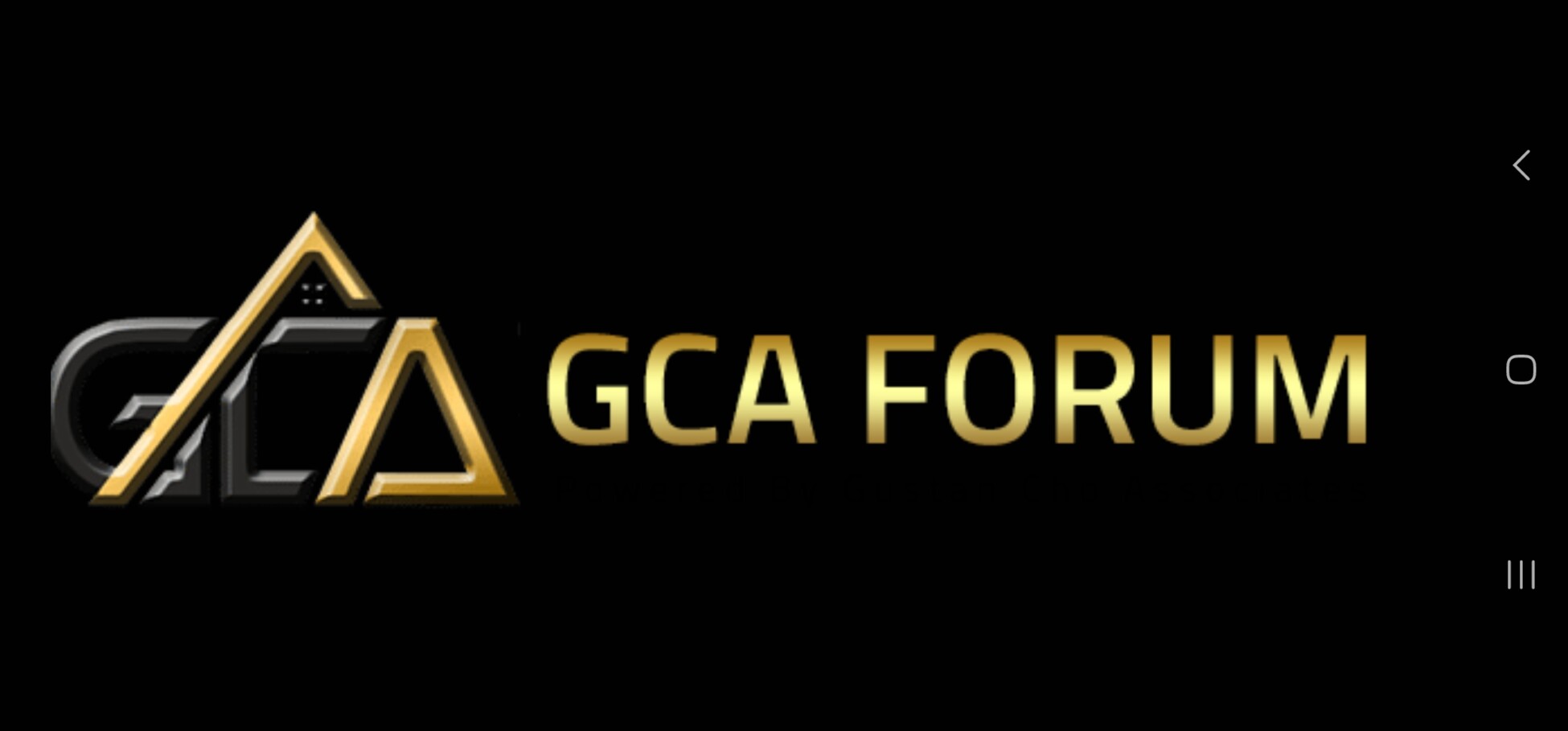
Connie
AttorneyForum Replies Created
-
Thank you for bringing up the commission-income borrowers qualifying for mortgage loans. Based on the information provided, here’s a general overview of commission-income mortgage guidelines:
Income Calculation: It is typically based on a 2-year average of commission income. Some lenders may consider a 1-year history if the borrower has been in the same line of work.
Documentation Required:
- Last two years’ tax returns
- W-2 forms for the last two years
- Recent pay stubs
- Year-to-date profit and loss statement (if self-employed)
Stability of Income:
- Lenders look for consistent or increasing income
- Decreases in income may require an explanation
Length of Employment:
- Generally, a minimum of two years in the same field is preferred
- Less than two years may be considered with strong compensating factors
Debt-to-Income Ratio:
- Commission income is factored into the debt-to-income ratio calculation
- Lenders typically prefer a DTI of 43% or lower, though some programs allow higher
Down Payment:
- Commission-based borrowers may need to show larger cash reserves
Loan Programs:
- Conventional, FHA, VA, and USDA loans may all be options, depending on the borrower’s situation
- Unreimbursed Business Expenses:
- These are typically subtracted from gross commission income
Future Income:
- Projections of future commissions are generally not considered
Seasonal or Cyclical Income:
- It may require additional documentation or averaging over a longer period
It’s important to note that lender and loan program guidelines can vary. Borrowers should work closely with their loan officer to understand specific requirements and present their income in the most favorable light.
For the most up-to-date and detailed information, refer to John Parker’s full blog post or consult directly with a mortgage professional. Would you like me to elaborate on any specific aspect of commission-income mortgage guidelines?
-
Creating a Comprehensive Training Program for Mortgage Loan Officers and Dual Real Estate AgentsOverview
The training program will equip newly licensed loan officers and dual real estate agents with the necessary skills and knowledge to originate mortgage loans and close deals successfully. This program will include detailed modules on the mortgage process, regulatory requirements, customer service, and practical experience through an apprenticeship.
Key Components of the Training Program
Introduction to the Mortgage Industry
- Overview of the mortgage industry
- Roles and responsibilities of a mortgage loan originator
- Key players in the mortgage process
Licensing and Regulatory Requirements
- Overview of the NMLS (Nationwide Multistate Licensing System)
- Licensing requirements and steps to become a licensed loan officer
- Regulatory compliance and ethical standards
Understanding Mortgage Products
- Types of mortgage loans (e.g., conventional, FHA, VA, USDA)
- Fixed-rate vs. adjustable-rate mortgages
- Jumbo loans and non-QM loans
Loan Origination Process
- Steps from application to closing
- Qualifying borrowers (income, credit, assets)
- Understanding loan documentation
Underwriting and Risk Assessment
- The role of the underwriter
- Key factors in underwriting (DTI, LTV, credit scores)
- Common underwriting issues and how to address them
Customer Service and Relationship Management
- Effective communication with clients
- Managing client expectations
- Building long-term relationships
- Sources: Forbes – Customer Service
Sales and Marketing Strategies
- Lead generation and prospecting
- Developing a personal brand
- Utilizing social media and digital marketing
Practical Training and Apprenticeship
- The six-closed loan apprenticeship program
- Mentorship with senior loan officers
- Hands-on experience from qualification to closing
Continuing Education and Professional Development
- Importance of ongoing learning
- Available certifications and advanced training programs
- Industry conferences and networking events
Linking Blogs and Resources
Each training program section will link to relevant blogs and articles for further reading and reference. For instance:
Introduction to the Mortgage Industry: Link to introductory blogs on the mortgage industry and the role of loan officers.
Licensing and Regulatory Requirements: Include links to detailed guides on the NMLS website and compliance articles from the CFPB.
Understanding Mortgage Products: Provide links to detailed articles on different types of mortgages from Investopedia and industry blogs.
Practical Training and Apprenticeship: Link to success stories and case studies from Gustan Cho Associates.
Example PowerPoint Slide StructureSlide 1: Introduction
- Title: “Welcome to the Mortgage Loan Officer Training Program”
- Overview of the program
- Objectives and goals
Slide 2: Licensing and Regulatory Requirements
- Title: “Getting Licensed and Understanding Regulations”
- Steps to get licensed
- Key regulations and compliance standards
- Link to NMLS Resource Center
Slide 3: Understanding Mortgage Products
- Title: “Types of Mortgage Loans”
- Overview of different mortgage products
- Fixed-rate vs. adjustable-rate
- Link to Investopedia – Types of Mortgage Loans
Slide 4: Practical Training
- Title: “Hands-On Experience: Apprenticeship Program”
- Details of the six-closed loan apprenticeship
- Benefits of mentorship
This comprehensive training program will effectively prepare new loan officers and dual real estate agents for successful careers in the mortgage industry by incorporating detailed educational content, practical training, and linking to valuable resources. PowerPoint will help organize and present the information clearly, making it accessible and engaging for trainees.
nationwidelicensingsystem.org
Welcome to the NMLS Resource Center
Welcome to the NMLS Resource Center
-
As I get older, I am intrigued about wines and fine cooking. Amazing!!! I consider it like art. I am no expert by any means but am an information magnet and always read and watch YouTube videos. Different food and drinks from different cultures is intriguing and amazes me everytime I watch it.
-
Rocco, I am so sorry to hear about your sister. Hope you and the family are doing well. Lets get together with the family for a barbecue and drinks once this heat wave is over. Whenever I want to dig into wines and recipes for food of all kinds, I ask Charlie. He knows everything about everything and do not know how he learned everything with his busy medical practice but I guess it is a hobby of his. Chianti is one of Italy’s most famous and historically significant wine regions. It is known for its red wines, primarily from the Sangiovese grape. Here is an overview of its history, the development of its sub-regions, and the winemaking process. Here is what I dug up also from several different wine websites and resources.
Origins: The Chianti region has been producing wine since Etruscan times. The earliest recorded mention of Chianti, a white wine, dates back to the 13th century.
The League of Chianti: In 1716, Grand Duke Cosimo III de’ Medici established the boundaries of the Chianti wine production zone, creating the “League of Chianti,” which included the villages of Gaiole, Radda, and Castellina.
Evolution of Chianti Wine
19th Century: Baron Bettino Ricasoli, a significant figure in Chianti’s history, formalized the blend of Sangiovese with Canaiolo and Malvasia Bianca. This blend became the standard for Chianti wines.
20th Century: The 1960s and 1970s saw the rise of “Super Tuscans,” high-quality wines that deviated from traditional Chianti regulations. This led to a shift towards higher-quality standards and the eventual modernization of Chianti wine laws.
Sub-Regions of Chianti
Chianti is divided into several sub-regions, each with its unique characteristics:
Chianti Classico:
Location: The original and most prestigious area between Florence and Siena.
Characteristics: Known for its higher quality wines, often marked by the “Black Rooster” (Gallo Nero) symbol.
Chianti Rufina:
Location: Northeast of Florence.
Characteristics: Produces wines with higher acidity and greater aging potential due to its higher altitude.
Chianti Colli Senesi:
Location: Surrounding the city of Siena.
Characteristics: Known for lighter, fruitier wines.
Chianti Colli Fiorentini:
Location: Surrounding Florence.
Characteristics: Often considered to have a more floral bouquet.
Chianti Colli Aretini:
Location: Near Arezzo.
Characteristics: Known for well-structured wines.
Chianti Montalbano:
Location: Near Pistoia and Prato.
Characteristics: Typically softer and more approachable wines.
Chianti Montespertoli:
Location: Near Florence.
Characteristics: Distinguished by their unique climatic conditions.
Chianti Colli Pisane:
Location: Near Pisa.
Characteristics: Known for their smooth and fragrant wines.
The Winemaking ProcessGrape Selection and Harvesting
Grapes: Chianti wines primarily use Sangiovese grapes. Other permitted varieties include Canaiolo, Colorino, and, in some cases, international grapes like Cabernet Sauvignon and Merlot.
Harvesting: Grapes are typically harvested in late September to early October, depending on the weather and ripeness.
Fermentation
Crushing and Fermentation: The grapes are crushed, and the must (juice) is fermented in stainless steel or concrete tanks. The fermentation process can last from 7 to 14 days.
Temperature Control: Modern wineries control the fermentation temperature to preserve the wine’s aromas and flavors.
Aging
Vessels: Chianti wines can be aged in various vessels, including stainless steel, large Slavonian oak casks, or smaller French oak barrels.
Duration: The aging process varies. Chianti Classico requires a minimum aging of 12 months, while Chianti Riserva must age for at least 24 months. Gran Selezione, the highest classification, requires 30 months of aging.
Blending and Bottling
Blending: If needed, different grape varieties and lots are blended to achieve the desired flavor profile.
Bottling: The wine is then bottled and may undergo further aging in the bottle before release.
By understanding the history, sub-regions, and winemaking process of Chianti, wine enthusiasts can better appreciate the complexity and heritage of this renowned wine region.Aging Requirements for Different Chianti Classifications
Chianti: Aging: Minimum of 3 months.
Chianti Classico: Aging: Minimum of 12 months.
Chianti Riserva: Aging: Minimum of 24 months.
Chianti Classico Gran Selezione: Aging: Minimum of 30 months, including at least three months in the bottle.
Notable Chianti Producers
Antinori: A renowned name in Italian wine, producing high-quality Chianti and other Tuscan wines.
Frescobaldi: Another historic family with a long tradition of winemaking in Tuscany.
Castello di Ama: Known for its exquisite Chianti Classico wines.
Ricasoli: One of the oldest wineries in Italy, located in the heart of Chianti Classico.
Fontodi: Renowned for its organically farmed vineyards and high-quality wines.
How to Read a Chianti Wine Label
Producer Name: Indicates the winery that made the wine.
Designation: Specifies the type (e.g., Chianti, Chianti Classico, Chianti Riserva).
Vintage Year: The year the grapes were harvested.
Region: “Chianti” or “Chianti Classico” indicates the sub-region.
Alcohol Content: The percentage of alcohol by volume.
Classification Symbols:
Black Rooster (Gallo Nero): Indicates Chianti Classico.
DOCG: Denominazione di Origine Controllata e Garantita, the highest quality designation.
Evolution of Chianti’s Wine Styles Over Time
Traditional Chianti: Originally a white wine, it evolved to a red blend that includes Sangiovese, Canaiolo, and Malvasia.
Modern Chianti: The post-1980s saw a shift towards higher quality, with a greater emphasis on Sangiovese and reduction or elimination of white grapes. International varieties like Cabernet Sauvignon and Merlot were introduced in “Super Tuscans.”
Sangiovese Grape Characteristics
Flavor Profile: High acidity and tannins, flavors of red cherry, plum, tomato, and earthy notes.
Aging Potential: Good aging potential, especially in blends and when made as a high-quality wine.
Versatility: Adaptable to different styles, from young and fresh to complex and aged.
Chianti Food Pairing Suggestions
Pasta with Tomato Sauce: The acidity in Sangiovese complements tomato-based dishes.
Grilled Meats: Enhances the flavors of grilled steaks, lamb, and pork.
Aged Cheeses: Pairs well with Parmigiano-Reggiano, Pecorino, and other aged cheeses.
Roasted Vegetables: Complements the earthy and smoky flavors of roasted vegetables.
Investing in and Collecting Chianti Wines.
Investment Grade: Look for Chianti Classico Riserva and Gran Selezione from notable producers.
Aging Potential: Wines with good structure and balance from excellent vintages.
Storage: Proper storage in a cool, dark place with stable temperature and humidity is crucial.
-
This reply was modified 10 months, 1 week ago by
 Connie. Reason: Spelling error
Connie. Reason: Spelling error
-
This reply was modified 10 months, 1 week ago by
-
There are many fake doctors on television and cable. We do not actually have definitive information on whether specific individuals like Dr. Jill Biden or Dr. Phil are considered “real” or “fake” doctors. Making determinations about someone’s legitimate credentials requires looking into the details of their education, training, licensing and fields of practice. In general though, the use of the title “Dr.” by public figures or celebrities can sometimes be misleading if they do not hold a doctorate degree from an accredited institution in a specific academic discipline. Some points on this topic: The honorific “Dr.” typically refers to someone who has earned a doctoral degree like an M.D., Ph.D., Ed.D, etc. from a recognized university. However, in some contexts, the “Dr.” title is used more broadly or honorarily, which can cause confusion. There have been cases of celebrities or public figures implying expertise by using “Dr.” in front of their names when they do not have a substantiated doctoral credential. This potential misrepresentation understandably raises questions about someone’s true qualifications and background. At the same time, many notable public figures do hold legitimate doctorates in fields like medicine, psychology, education and more. Rather than make specific judgments, the key is to review the claimed credentials and determine if someone has earned a doctorate degree from an accredited institution that is relevant to the expertise they are claiming or portraying to the public. Transparency about one’s educational background helps avoid ambiguity.
-
This reply was modified 10 months, 2 weeks ago by
 Gustan Cho.
Gustan Cho.
-
This reply was modified 10 months, 2 weeks ago by
-
Connie
MemberMay 30, 2024 at 11:05 pm in reply to: Former President Donald Trump Guilty on All CountsTrial of former President Donald Trump should have never happened. There is going to be a lot of repercussions against New York. It can and will most likely bankruptcy New York, ruin many careers including New York District Attorney Alan Braggs, the judge, and for sure the democrats. The judge overseeing the New York civil fraud trial against former President Donald Trump is Judge Arthur Engoron. This trial involves allegations that Trump and his organization fraudulently inflated the value of their assets. In addition to the New York case, Trump faces multiple legal challenges, each with different judges presiding over them, including federal cases related to election subversion and classified documents. The prosecutors in the various legal cases involving former President Donald Trump include multiple individuals across different jurisdictions. In the New York civil fraud case, the key figure is New York Attorney General Letitia James. For federal cases, such as those involving alleged election interference and classified documents, Special Counsel Jack Smith is leading the prosecution. Additionally, Fulton County District Attorney Fani Willis is handling the case related to election interference in Georgia. Each of these prosecutors plays a significant role in the respective cases against Trump. The outcomes of these trials could significantly impact Trump’s political future and public opinion.
https://www.youtube.com/watch?v=ttOQlM9gLIY&ab_channel=WPLGLocal10
-
Here are some funny, mildly dirty jokes for a bit of humor:
-
Why don’t we do it in the road?
- Because the chicken crossed it first!
-
Why did the scarecrow get promoted?
- Because he was outstanding in his field, just like the way I want to be outstanding in bed!
-
What did the egg say to the boiling water?
- It’s gonna take me a minute to get hard, I just got laid!
-
Why don’t oysters donate to charity?
- Because they are shellfish, but I can be selfless with you!
-
What’s the difference between a boyfriend and a husband?
- About 30 pounds.
-
Why did the banana go out with the prune?
- Because it couldn’t find a date.
-
What did the elephant say to the naked man?
- How do you breathe through that tiny thing?
-
Why don’t scientists trust atoms?
- Because they make up everything, just like my excuses to see you!
-
What’s the difference between a tire and 365 used condoms?
- One is a Goodyear. The other is a great year.
-
Why do golfers wear two pairs of pants?
- In case they get a hole in one!
-
-
Connie
MemberMay 5, 2024 at 5:18 pm in reply to: Can Real Estate Agents Become Loan Officers at the Same TimeYes, real estate agents can become loan officers at the same time, and this dual role can be beneficial for both the professionals and their clients. However, there are certain considerations and regulations to keep in mind:
-
Licensing Requirements: Both real estate agents and loan officers require specific licenses to operate legally. For real estate agents, this typically involves passing a state-specific real estate exam and obtaining a license. Loan officers, on the other hand, generally need to be licensed under the Nationwide Multistate Licensing System & Registry (NMLS). This process includes education, examinations, and background checks.
-
Conflict of Interest Considerations: While it’s legally permissible in many places for a person to hold both licenses and operate as both a real estate agent and a loan officer, professionals should be cautious about potential conflicts of interest. For instance, using one’s position as a real estate agent to unduly influence or pressure a client into using their services as a loan officer could raise ethical concerns and is generally frowned upon by industry ethics boards.
-
Benefits of Dual Roles: Operating in both capacities can be advantageous as it allows the professional to provide a full-service experience to clients, helping them find a home and secure financing all in one place. This can streamline the process for the client, potentially leading to quicker closings and higher levels of client satisfaction.
-
State Regulations: Specific rules and regulations regarding practicing as both a real estate agent and loan officer can vary by state. Some states may have specific disclosures or other legal requirements designed to protect consumers from conflicts of interest.
-
Professional Capacity: Professionals choosing to take on both roles must be careful to maintain clear boundaries and transparency with clients, ensuring they are fully informed and able to make independent decisions without undue influence.
For those considering this path, it’s important to fully understand both the legal and ethical requirements and ensure that they are capable of managing the responsibilities of both professions effectively. It’s also wise to consult with legal or professional advisors to fully understand how these roles interact within their specific state or regulatory environment. There are indeed career opportunities for individuals who are dually licensed as a Realtor and a Mortgage Loan Originator (MLO). Here are some key points:
-
Gustan Cho Associates and NEXA Mortgage LLC offer unique REALTOR-MLO career opportunities for full-time realtors.
-
The realtor and the LOA will team up and service the client as a realtor/MLO team.
Please note that the specifics of these opportunities may vary depending on the company and the location. It’s always a good idea to reach out to potential employers or mentors in the field for more personalized advice. Good luck with your career exploration!
-
This reply was modified 4 months ago by
 Sapna Sharma.
Sapna Sharma.
-
-
Funny. Love these prankster video clips.

